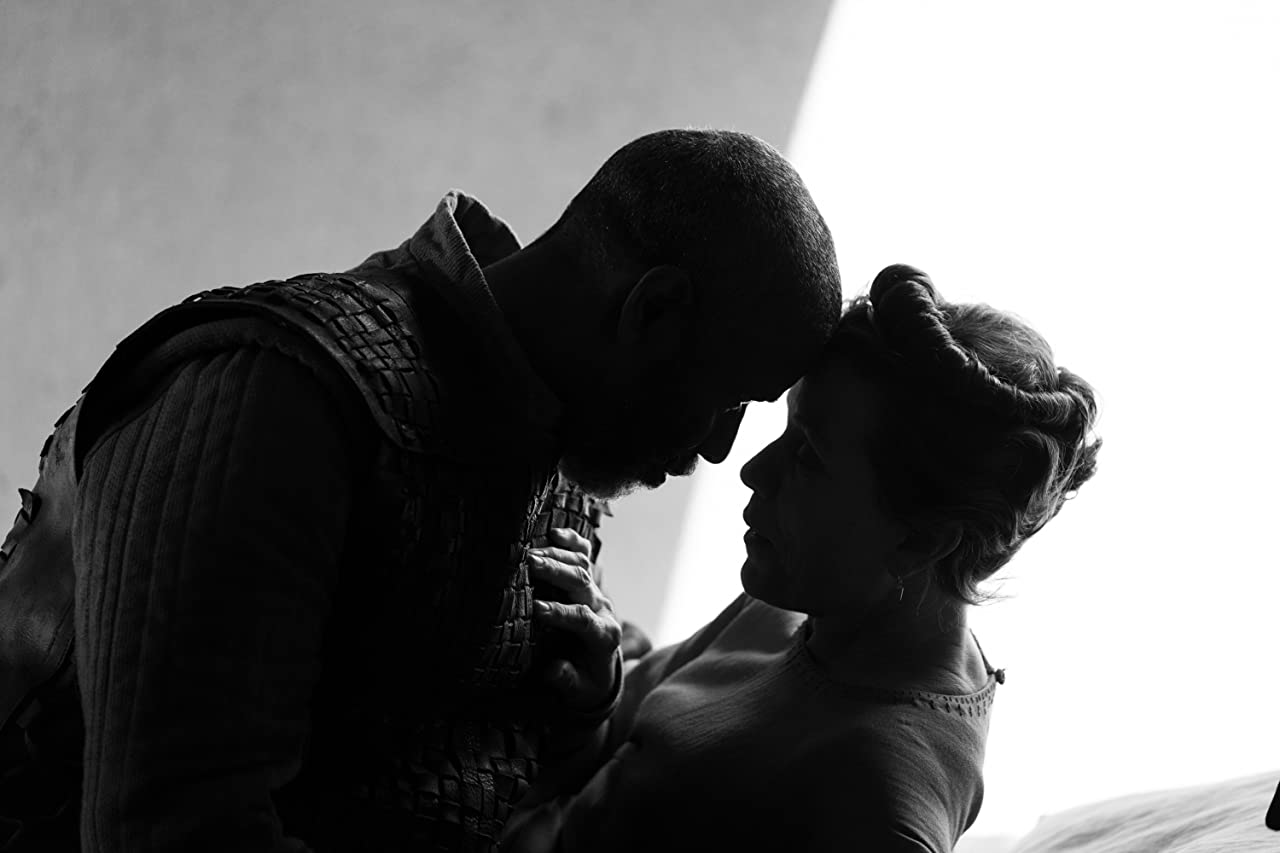The Tragedy of Macbeth (2021): A Movie Review
Joel Coen’s adaption is a cinematic presentation of theatre, with superb image and sound.

Good Shakespeare adaptions tend to fall into two camps.
They can be theatrically faithful treatments that put the 17th-century plays on screen with reverence, using cinema to add elements not possible on the stage (Macbeth (1948), Orson Welles). Or, they can boldly rework the source material, modernising the language and dropping the story into a new context (My Own Private Idaho (1999), Gus Van Sant).
For my money, the second approach tends to make more interesting movies. It can lead to results that capture the life and death, everyman but bigger-than-the-universe dramatic spirit that emotionally powers the Bard’s plays, while making the stories more accessible and relatable. The reinventions have more cinematic possibility, and more potential to engage modern audiences in big ways.
Joel Coen’s movie takes the first approach. It is a theatrically faithful presentation of the play, with dialogue that follows Shakespeare closely. That sets it apart from most cinema: it is a cinematic presentation of theatre.
This can make it tricky to understand every line in real-time. You don’t need to parse every word, though: the movie is constructed visually to tell the story without decoding every rhyming couplet. And the language is a bit simplified and cleaned up for modern ears (though not much).
If you dislike going along in a “catch as catch can” fashion with movie dialogue, the Shakespearean English could be a barrier — which is the same in the theatre, obviously, but worth noting. More than likely, you’ll click with the style within minutes. And if you enjoy Shakespeare in the theatre, enough said.
Following the play closely is a valid approach. Joel Coen puts it as preserving the “melody” of Shakespeare. That melodic, semi-operatic flow and rhythm of speech, which is the soul of the monologues (and almost all adaptations preserve some of), has an inimitable and spellbinding quality. It creates a gigantic theatrical spirit that cannot be generated without the words.
So when faithful Shakespeare adaptations are done really well, despite my preference for reinvention, I am on board. Cinema can present theatre in unique ways, adding dramatic dimensions that couldn’t be there otherwise, and little (if anything) is lost. Really, as far as I am concerned cinema is theatre, version 2.0.
The quality put into Joel Coen's movie means I am on board with it.
The casting is star-studded, with Denzel Washington as Macbeth, Frances McDormand as Lady Macbeth, Brendan Gleeson as Duncan, and Kathyrn Hunter as all three of the witches or “weird sisters.”
Denzel Washington is compelling as Macbeth, with dynamic emotional range and engaging theatrical delivery. He conveys an unpredictable madness combined with intelligence and physical prowess (this Macbeth turns out to be a badass in combat, despite being played older than usual — which works fine, in a “samurai master” kind of way). He plays him as a man with a level-headed personality that is thrown catastrophically off-kilter by a single act of evil.
Frances McDormand is excellent as Lady Macbeth, too. It was her performance on the stage that inspired Coen to make the movie, and you can see why. She has a polished, superbly balanced theatrical mode of acting, and her performance shows her range. She inhabits the role well, making us feel the sick chemistry cultivated between husband and wife. The fates of the Macbeths are inseparably bonded by a spine-tingling, unnatural mix of evil and love. That this is arguably the most faithful portrayal of marriage in all of Shakespeare is somehow perfect, in a wicked and twisted way.
In a role with less screen time, Kathyrn Hunter is exquisitely dark and mesmerising playing the three witches. It is a highly memorable rendition, with arachnid body contortions and repellent vocals, and she appears in some of the best shots of the film.
What sets the film apart most is its outstanding black and white photography. The film is visually incredible.
Bruno Delbonnel is director of photography. Delbonnel is a multi-time Academy Award nominated cinematographer and has worked on several Coen brothers pictures in the past, including Inside Llewyn Davis (2013).
It is an atypical, white-dominated black and white image, and the compositions are amazingly artistic and precise. Its most distinctive quality is the use of mid-greys, making the film world feel like a mystical realm made of the fog that often envelopes the landscape. This sets it apart from the 1948 adaptation by Orson Welles, which took the noir and horror elements of the play and went with a very black-dominated black and white, relying on high-key lighting. Shadows are used here, too, but they don’t dominate.
There is meticulous attention to detail in the set design, filtering down from the precise compositions that make up the film. Macbeth’s simple but luminous white crown leaps out, attracting the eye and giving it a supernatural feel. Everything feels placed and worked on, constructed in a very deliberate and highly polished way.
Sound is said to be more important than the image in cinema. As much as I appreciate the photography of movies, I agree — if only to emphasise how crucial sound is. Bad sound makes a movie unwatchable; a poor image can be lived with, and balanced out by other areas.
The sounds design is great here. Dialogue is crystal clear (which helps to improve its comprehension), even with reverb that projects the rhythmic speech in a dramatic and aurally satisfying way. The witch speeches, shrieks of various characters, sounds of ravens flying, and atmospheric elements all have immersive and unsettling audio and sound effects attached to them. Sound is a first class citizen — it gets the same meticulous attention to detail as the image. The castle rings with isolated footsteps by day, and door knocks that sound like they come from giants by night. The soundscape is on par with, and complementary to, the landscape.
With sound and image being the most impressive qualities of the movie, it is (more than usual) a movie that demands to be seen on the big screen. And since this is an Apple Original Film, most viewers will have the choice to either go see it in theatres, or stream it at home on Apple TV+.
I have seen the film in both formats (big screen first). In the cinema there is a kind of grand, theatrical, dark Shakespearean spark that flies from the image and sound you are never going to recreate at home. A genuine sense of theatre. If you have been anticipating the movie, and want to experience it at its best, go see it. A trip to the theatre (version 2.0).
It might be conventional in its script treatment, but Joel Coen’s Macbeth is a dazzling and cinematic adaptation, anchored by world-class acting, and set apart by spectacular photography and enrapturing sound.
James Lanternman writes movie reviews, essays, and moonlit thoughts. You can reach him at [email protected].
Previously… A Simple Day
